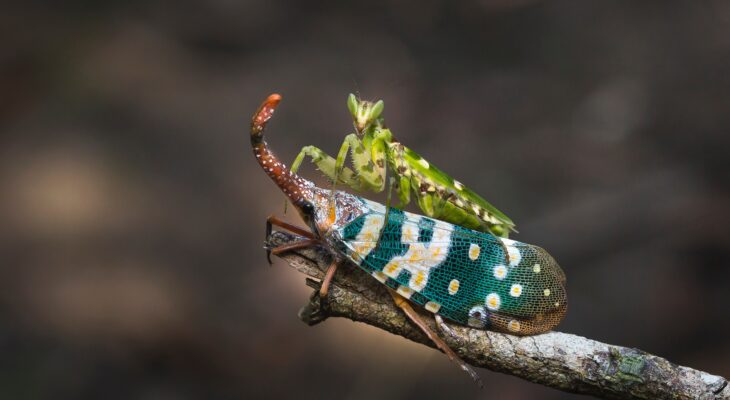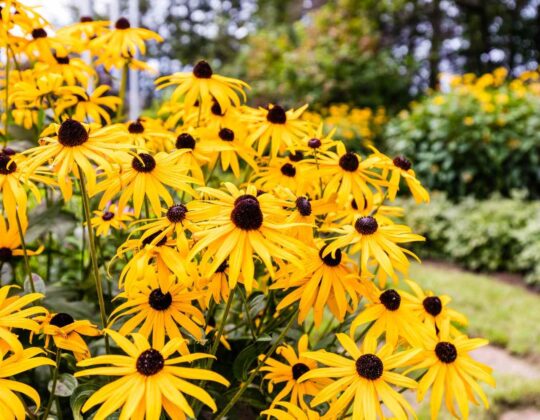Creating a thriving and balanced ecosystem in your garden involves more than just cultivating beautiful plants; it’s about fostering a harmonious relationship with the insects that inhabit this microcosm. Beneficial insects play a crucial role in natural pest control, offering an environmentally friendly and sustainable approach to managing garden pests. In this comprehensive guide, we will explore effective strategies to attract beneficial insects, ensuring that your garden becomes a haven for these natural allies while promoting a healthy and pest-resistant environment.
1. Understand the Beneficial Insects:
- Ladybugs (Ladybirds):
- Feed on aphids, mites, and scale insects.
- Parasitic Wasps:
- Lay eggs on or inside pests like caterpillars and aphids.
- Predatory Beetles:
- Consume various pests, including caterpillars, mites, and aphids.
- Hoverflies:
- Feed on aphids, thrips, and caterpillar eggs.
- Praying Mantises:
- Ambush and consume a wide range of garden pests.
2. Provide Diverse Plants:
- How it Helps:
- Different beneficial insects are attracted to various types of plants. By offering a diverse range of flowers, herbs, and shrubs, you create an environment that caters to a variety of these insects.
- Plants to Include:
- Marigolds, dill, fennel, yarrow, sunflowers, and mint are just a few examples that attract beneficial insects.
3. Plant for Continuous Bloom:
- How it Helps:
- Beneficial insects require nectar and pollen for sustenance. Planting flowers that bloom at different times throughout the growing season ensures a constant and reliable food source.
- Plants for Continuous Bloom:
- Include perennials like coneflowers, lavender, and salvia, as well as annuals such as zinnias and cosmos.
4. Avoid Pesticide Use:
- How it Helps:
- Pesticides, while effective against pests, can harm beneficial insects. Minimizing or eliminating pesticide use allows these insects to flourish and maintain a balanced ecosystem.
- Natural Alternatives:
- Explore natural pest control methods such as neem oil, insecticidal soaps, and introducing predator insects.
5. Create Habitat Diversity:
- How it Helps:
- Beneficial insects need suitable habitats for shelter, reproduction, and overwintering. Providing diverse habitats, such as tall grasses, shrubs, and rock piles, attracts a broader range of beneficial species.
- Habitat Features:
- Include areas with dense vegetation, a water source, and undisturbed corners where insects can nest or lay eggs.
6. Use Companion Planting:
- How it Helps:
- Companion planting involves strategically placing plants to enhance each other’s growth or deter pests. Certain plants repel harmful insects while attracting beneficial ones.
- Companion Planting Examples:
- Plant basil near tomatoes to repel tomato hornworms, or sow nasturtiums to attract aphids away from other plants.
7. Provide Water Sources:
- How it Helps:
- Like all creatures, beneficial insects need water. Providing shallow dishes or creating small water features can attract and sustain these insects in your garden.
- Water Features:
- Install bird baths, saucers with pebbles for perching, or create small ponds to serve as water sources.
8. Practice Integrated Pest Management (IPM):
- How it Helps:
- IPM involves combining various strategies for pest control, including biological controls like beneficial insects. This comprehensive approach helps maintain a balanced ecosystem.
- IPM Techniques:
- Regularly monitor your garden for pests, introduce natural enemies, practice good garden hygiene, and use physical barriers when needed.
9. Provide Nesting Sites:
- How it Helps:
- Many beneficial insects require specific nesting sites for laying eggs or sheltering during adverse weather conditions. Creating suitable habitats enhances their populations.
- Nesting Sites:
- Install bee houses for solitary bees, leave some areas of exposed soil for ground-nesting bees, and include plants like dill or parsley for caterpillar-hosting insects.
10. Utilize Beneficial Insect Habitats:
- How it Helps:
- Prefabricated beneficial insect habitats can be strategically placed in your garden to attract and provide shelter for these helpful creatures.
- Types of Habitats:
- Purchase or build bee houses, ladybug boxes, or lacewing habitats to encourage these insects to stay and thrive.
11. Employ Attractive Herbs:
- How it Helps:
- Certain herbs not only repel pests but also attract beneficial insects. Incorporating these herbs into your garden layout serves a dual purpose.
- Herbs to Include:
- Plant herbs like cilantro, dill, and fennel to attract beneficial insects like ladybugs and predatory beetles.
12. Encourage Wildlife Diversity:
- How it Helps:
- Birds, amphibians, and reptiles also play a role in pest control. Creating a garden that supports overall biodiversity contributes to a healthy ecosystem.
- Wildlife-Friendly Features:
- Install bird feeders, provide bird baths, and create shelter for toads and lizards to encourage a diverse range of wildlife.
Conclusion:
Attracting beneficial insects to your garden is a holistic approach that not only ensures natural pest control but also fosters a thriving and diverse ecosystem. By understanding the needs and preferences of these helpful creatures, you can create an environment that attracts, supports, and sustains them. Embrace the beauty of a balanced garden where beneficial insects and plants coexist in harmony, promoting a sustainable and pest-resistant oasis. As you implement these strategies, you’ll witness the transformation of your garden into a vibrant and ecologically rich space. Happy gardening!









